✠ WW1 Austro-Hungarian Naval Aviation
K.u.K. Seefliegerkorps
Introduction
Main seaplane models
The Kaiserliche und Königliche Luftfahrtruppen or Austro-Hungarian “aviation troops” also called Imperial and Royal Aviation Troops was its regular air force, the equivalent of the German Luftreitskrafte. It dwarved literrally the naval aviation corps (K.u.K. Seefliegerkorps), and the latter shared resources and manufacturers with the regular air force. Yet, the Austro-Hugarian Navy (KuK Kriegsmarine) nevertheless featured an independent air force as the K.u.K. Seeflugwesen (Imperial and Royal Naval Air Corps), repeteady requested by the Navy which wanted independent operations, reflected by the monopoly of the Army over aviation, for its operations in the Adriatic.
It was eventually granted by Imperial decree and funded in August 1916. and later rechristened. Naval officers who received their initial pilot training at the airfields of Wiener Neustadt in Lower Austria became the first enlisted pilots. First assigned for tours aboard the Tegetthoff-class battleships but also at the Berat, Kavaja, Tirana, Scutari and Igalo airfield in Albania and southern Dalmatia, and later Podgorica in Montenegro.
In operations, air units were called “Fliks”. Feltre became its main base after its capture on 12 November 1917, after the defeat of Caporetto. It joined the coastal air bases of Arsie and Fonzaso, the latter being a main station for Austrian naval aviators in that area. Naval Aviation was provided its own escort fighters, usually locally modified German planes but also local variants or domestic planes. These models were the Fokker A.III and E.III and later D.VII, Hansa-Brandenburg B.I and D.I, Aviatik D.I, Albatros D.III, Phönix D.I. The most prominent seaplane multirole fighter was the Lohner L.
Main Luftfahrtruppen/Seefliegerkorps Manufacturers

An Albatros D.III in service with the K.u.K. Seefliegerkorp. Austrian Ace Brumowksi was the corps’s top ace (11 victories).
Development of the Austro-Hungarian aircraft industry
.jpg)
Knoller C.II
Aviatik, Knoller, Lloyd, Lohner, Phönix or UFAG are perhaps forgotten aviation names today; but during the great war they delivered dozens of planes, from fighters to light bombers and floatplanes for the adriatic. Austro-Hungary fought many nations during the war, not leas the Italians on their mountainous Alpine front or the adriatic sea, but also Serbs and Brulgarians in the east, Romanians and Russians. Fortunately for them, their opponents had limited indutrial capabilities to mass-produce planes and despite her limits, the Austro-Hungarian Aviation did wonders.
Austria-Hungary’s economics were mostly rural, with a growing industry in and around the Czech and Austrian urban centers. Some brands were already famous like Steyr or Daimler, and the manufacturing of planes, outside the engine, only required woodworking and non-strategoc materials. With existing blueprints, any crafty company, even with only two or three artisans, could start as an aircraft manufacturer, turning a few planes a month.
✠ Aviatik
A German company producing for Austria-Hungary
Funded as Automobil und Aviatik AG in December 1909 at Mülhausen (Alsace, new in France). In fact its owner was Alsatian Georges Chatel, starting with the license-production of French aircraft of the Hanriot and Farman types. The first domestic design emerged in 1912, and a line of successful biplanes designed by Robert Wild soon made the renown of the company. It became soon one of the major aircraft manufacturer in the german Empire, and for practical reasons was relocated to Freiburg because of the French threat in 1914, and moved to Leipzig-Heiterblick with new large facilities in 1916.
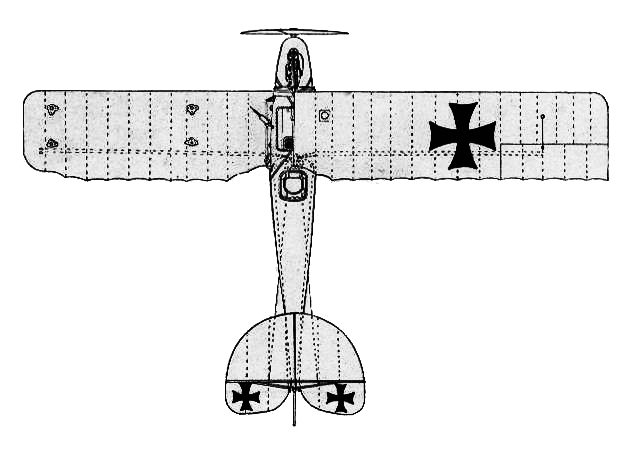
Aviatik D.I plan.
A large part of the production was made for Austria-Hungary. More importantly, a subsidiary was created in Vienna, the Österreichisch-Ungarische Flugzeugfabrik Aviatik. Aviatik specialized in reconnaissance aircraft like the the B.I and B.II, and the Austro-Hungarian subsidiary produced its own designs including fighters like the D.I, and a number of prototypes. The company ceased any operations in 1919 following the treaty of Versailles, with no prospect of civilian reconversion.
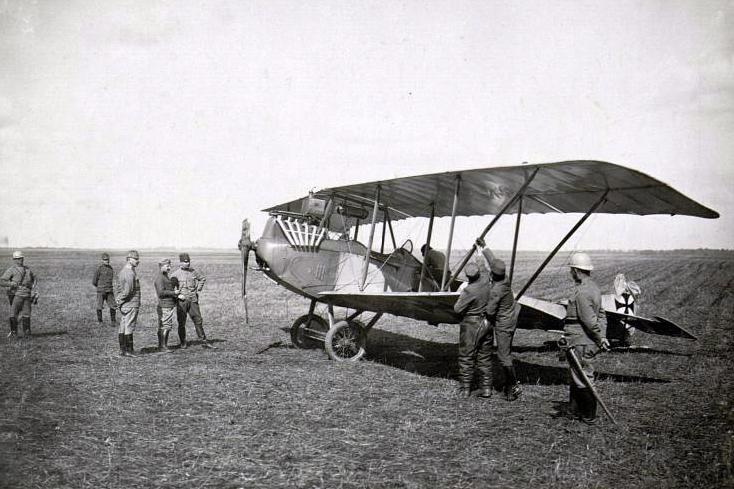
Austro-Hungarian Aviatik B.II on the Eastern Front near Ostrozets, Wolhynien in 1916.
Aviatik Models
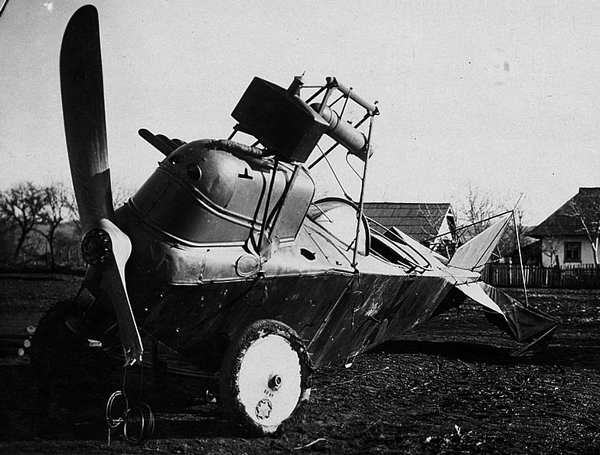
Austro-Hungarian Aviatik B.III downed on the Eastern Front.
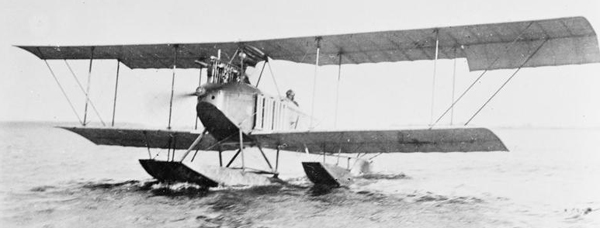
Austro-Hungarian Aviatik floatplane conversion, date and model unknown.
- Aviatik B.I 1914 recce biplane (200+410)
- Aviatik B.II 1914 recce biplane (200?)
- Aviatik B.III 1914 recce biplane (100?)
- Aviatik C.I (1915) recce biplane (548)
- Aviatik C.II (1915) recce biplane (20?)
- Aviatik C.III (1916) recce biplane (50?)
- Aviatik C.V (1916) experimental gull-type upper wing recce biplane (1)
- Aviatik (Ö) C.I (1916) recce biplane (255)
- Aviatik (Berg) D.I (1917) biplane fighter (700)
- Aviatik (Berg) D.II (1918) biplane fighter (13)
- Aviatik D.III (1918) prototype fighter (2)
- Aviatik D.VII (1918) prototype fighter (1)
✠ Knoller
The Knoller story: How to not do it
In 1914, Austro-Hungarian aviation was in sorry state, with many old planes from various manufacturers and origins stacked together, no tactics or proper school and this lack of coherence conducted the Army and its aviation corps branch to urge the adoption of homogeneous from various manufacturers. The first step was to order in 1915 eighty-six Hansa-Brandenburg B I aircraft, manufactured later up to 335 at Fischamend arsenal, but they were soon obsolete. So there were powerful solicitation throughout the Empire for more proposals from many manufacturers and in fact no less than 125 prototypes were tested, but few made it to production runs. One of these upstarts was the “Knoller Program” which until the provided resources for the development and production of trusted two-seater warplanes.
Richard Knoller, the founder, was actually a professor at the Technical University in Vienna, and seen as an aviation expert, already working with the Aviation Arsenal of Fischamend. Due to his backing, the project got credentials quite rapidly. However the program also underwent considerable time pressure, but went through three stages, with the development of the Knoller B I, C I and C II. Thöne & Fiala aircraft works started in January 1915 on the Knoller B I, a biplane plagued by initial delays, so much so the first flight only occurred on 13 November 1915. And this experience revealed numerous issues with the airframe.
Many improvements took plane until new tests were carried out by January-April 1916 helping to identify more agility and structure problems. But the B.II ultimately went through a forty-three production even though it was obviously not ready for it, from July 1916.
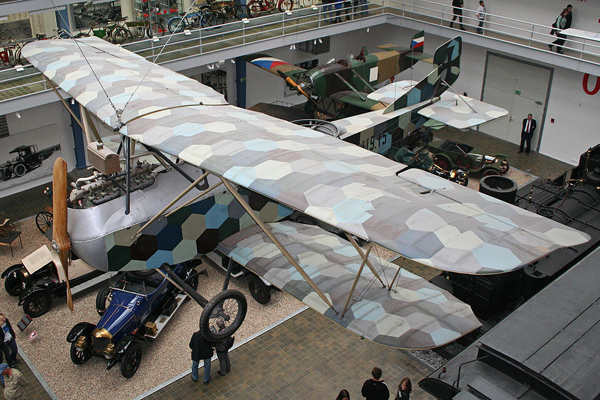
Meanwhile, starting already in late 1915 work began on a more powerful Knoller C.I was devised at Phönix works with the Aviation Arsenal, solving numerous technical issues delaying the first flight to April 1916, followed by more issues so much that these planes appeared to be a wasted investment, only countered by Knoller’s own reputation. Therefore after another serie, the military maintained their trust and ordered the development of the Knoller C.II, which, again, accumulated problem of its own.
Only by the spring of 1917 the Parliament got wind about what was happening with the “Knoller Program” and the issue was raised by Count Adalbert Sternberg, which publicly revealed the the development mess which had been until then stubbornly pursued, and obtained a vote for killing the program. In this enterprise, the Aviation Corps commissioned 185 Knoller aircrafts of all models between 1915 and 1918 which were all more or less unusable aeroplanes, or at least for training, but even were dangerous in this role.
Between considerable delays in the supply of more effective aircraft of a more sound design and the scarcity of resources, time and money were wasted. This could be a scenario familiar to us since this wastage appeared in time of war when the state’s funds are allocated in emergency in such way, large open to any idea or submission.
Aircraft Industrial records
Thee Knoller as seen above were devised and produced, but without much success.
- Knoller B.I (1916) -50
- Knoller C.I (1916) -16
- Knoller C.II (1917) -75
- Knoller 70 (1918) -2 prototypes
Knoller B.I (1916)
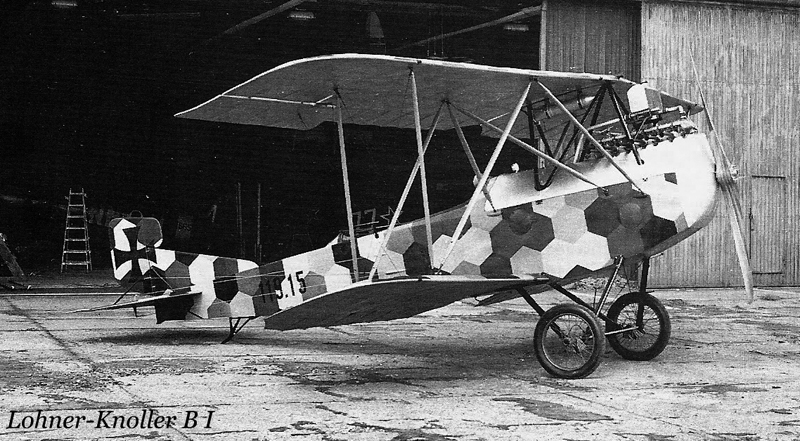
Knoller B.I photo, credits flyingmachines.ru
The first plane in this lineage had exceptionally a wireless wing design (warren-truss wing cellule). But this observation biplane later denominated by the Army Knoller B.I proved on first trials structurally disastrous. The fuselage twisted so much that it added stress and deformation to the outer wings to the point of rupture in flight. Therefore many modifications were made to the first and second prototype, not with that much gains in performances although some issues were solved.
After the fifth production machine called 35.85 the Fliegerarsenal Fischamend ordered ten more aircraft (35.86 to 35.95) but only the first was shortly flown showing all its potential for disaster. The army then ordered the whole batch to be placed in storage, although some sources claims they were used some time for training. On december, 31, 1915, Aviatik earned a contract for 32 Knoller B.I more. However the first of this serie, 35.01 yet had again a cortege of structural issues and nearly crashed after a brief flight. The second one had its elevator horns rupturing while the the observator seat of the 35.07 wet through the fuselage and were grounded. In the end only 4 aircrafts ended for training and tests only.
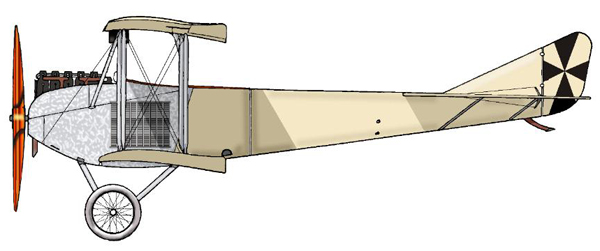
Knoller B.I from wings palette
Specifications
Knoller C.I (1916)

The Knoller C.I, credits Aviadejavu.ru
The Knoller C.I was a reconnaissance aircraft defined as a conventional biplane design with staggered wings, while the pilot and observer were seated in tandem in an open cockpit and an upper swept back wing. Production took place at Phönix, but only a small numbers saw the light as the army was already interested by the Knoller C.II. The same problems that had plagued the B.I also grounded the C.I and there were no record of active use, or even proof they actually flown.
Specifications
Crew: 2, pilot and observer
Dimensions: 8.5 x 12.70 x 3.30m (27 ft 11 in x 41 ft 8 in x 10 ft 10 in) x Wing area: 36 m2 (387 ft2)
Weight: Empty 780 kg (1,720 lb)
Engine: Austro-Daimler 120hp 6-cyl, 120 kW (160 hp)
Armament: 2x Spandau 8mm MGs
Knoller C.II (1917)
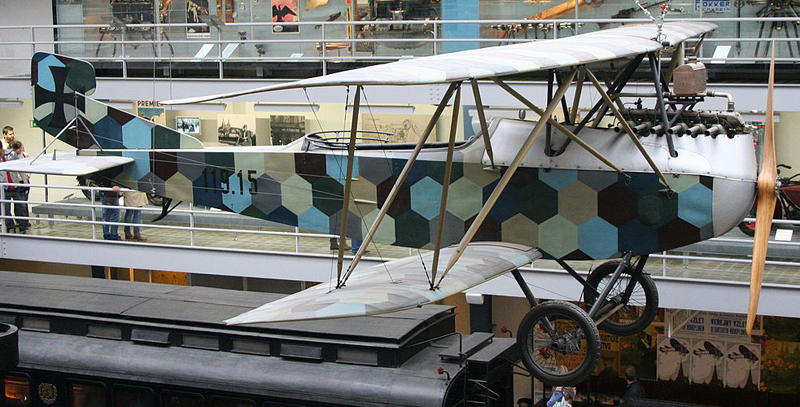
The Knoller C.II 119.15 at Prague museum
Prof. Richard Knoller designed the two-seat reconnaissance Knoller B.I manufactured by Aviatik (35 with a 100 hp Mercedes engine) and subcontracted by Thöne & Fiala.
In the summer of 1916, the KuK Luftschifferabteilung commissioned Albatros from Vienna, Stadlau, to convert this biplane into a fighter, equipped with a 160 hp Austro-Daimler engine, which gave series 25, slightly redesigned in mid-1916. Aviatik and Lohner also entered production with the series designated Knoller C.II. In September 1916, the first arrived at Aspern. Lohner offered in its final letter from October, 10, 1916 to built the Knoller C II with a 160 hp Austro-Daimler and deliver 24 planes ar each 28,000 crowns each, and another 24 at 32,000 crowns each.
According to the performance of the Aviatik 30.10, maximum setup weight was under 700 kg. After inquiry because of the high surcharge, the company Lohner tried to cross the test cell with the type Aviatic 18.5 which represented 1500 hours of work but only 380 hours on the Lohner cell. The offer was approved by the Austro-Hungarian War Department with Decree 5/L3568, of 8 december 1916, registered on January 4, 1917 in the Commission Book No. 80, page 164. According to the final letter, the schedule included the following completions: 1 test plane ready on the 13th October 1916, then 2 on the 21st, then another three on Oct. 28, four on November, four on November 11, four on Dec. 23, four on Dec. 30 and the last four of the series on January 6, 1917.
The Knoller C.II 119.15 at Prague museum
The first 24 Lohner-Knoller C.II, Ba.19 were equipped with a 180 hp Austro-Daimler. The first completed aircraft of Aviatik (Ba 36) was delivered in September 1916 but only tested in Aspern on 10 February 1917 and revealed fatal structural problems: The wings collapsed in flight and the plane crasehd, killing the crew. They were solved by inscreasing the surface struts and fitting an additional fuselage strut. The first Lohner aircraft with this innovation and a 160 hp Austro-Daimler was the 19.25, prototype for the Ba. 119.
However as more accidents happened with this fighter aircraft, the War Ministry received instructions from the parliament to stop further work on the Knoller series in June 12, 1917. The Knoller C.II was a conventional reconnaissance biplane design, with staggered wings, pilot and observer seating in tandem in an open cockpit, but no defense MG. The upper wing was slightly less swept back and the fuselage was made of plywood with skinned fabric wings and the interplane struts were made of steel, placed in a warren truss configuration. Three batches of 25 planes were delivered respectively by Aviatik, Lohner, and WKF. The only surviving C.II is now on display at the National Technical Museum in Prague.
Specifications
Crew: 2, pilot and observer
Dimensions: 8.54 x 10.37 x 3.02 m (28 ft x 34 ft x 9 ft 11 in), Wing area: 30 m2 (323 ft2)
Weight: Empty 695 kg (1,630 lb)
Engine: Austro-Daimler 185hp 6-cylinder 138 kW (185 hp).
Armament 2x Spandau 8mm MGs.
Knoller 70 (1918)
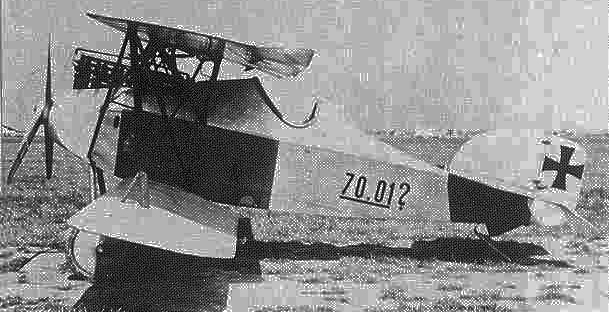
Despite the cancellation of the program, the Knoller was still undergoing improvements. The model 70 single-seat biplane was started in late 1917 but was tested in 1918, followed quickly by an order for ten pre-series aircraft for additional evaluation. The Knoller 70.01 was the first of the only two prototypes completed, at Fliegerarsenal Fischamend. The wings were unstaggered with single bays with an inherent ability to “flex” on-the-fly with speed, reducing drag. Struts and bracing were both under and above the aircraft which fuselage had a large spinner added to the nose. The tail had a single vertical fin with mid-set horizontal planes while the undercarriage was a classic tail-dragger arrangement.
The plane was 7.98m (26.2 feet) wide for 6.37m (20.9 feet) long and 2.86m in height (9.4 feet). It was propelled by a Hiero 6-cylinder, water-cooled engine rated for 230 hp giving a top speed of 149 mph (239 kph) which is quite good. Th Knoller 70 was also armed by two 8mm Schwarzlose machine guns, synchronized and placed on the engine hood. The 70.01 first flew on November 23rd, 1917 but took some damaged and was repaired, ailerons being fitted at the upper wing members and it went into more tests in the spring of 1918, sadly undergoing a crash landing. The 70.02 ended testings in September 1918 but the next month where it was ready for orders, the armistice came out.

Profile of the Knoller 70.01 (from wingspalette.ru)
Specifications
Dimensions: 6.35 x 8.00 x 2.85 m(20.83 x 26.25 ft x 9.35 ft)
Propulsion: Hiero 6-cylinder water-cooled 230 hp – Speed: 149 mph (240 kph; 130 kts)
Armament: 2 x 8mm Schwarzlose machine guns mounted over the nose and synchronized to fire through the spinning propeller blades
✠ Lloyd
The Magyar Aircraft Company
Lloyd (which will survived up to the Hapag-Lloyd company) was a short-lived aviation manufacturer which started production of reconnaissance/trainer biplanes, and until the end of 1917 delivered about 360 planes of the C-type, which nomenclature meant a two-seater reconnaissance and multi-purpose plane (so used also to patrol and do some light bombing and strafing attacks).
The Company was developed in the Transleithanian part of the realm, by the Magyar Lloyd Repülőgép és motorgyár Részvény-Társaság or Hungarian Lloyd Aircraft and Motor Works, Incorporated. The Lloyd C.II and derivatives like the the C.III and C.IV were reconnaissance aircraft based on the 1913 C.I design, conventional wood and canvas two-seats biplanes with swept-back wings.
Lloyd designers Wizina and von Melczer created a reduced wingspan and wing area but increased weight for the C.II, and added a 0.315 in (8 mm) Schwarzlose machine gun placed on a semi-circular mount for the observer.
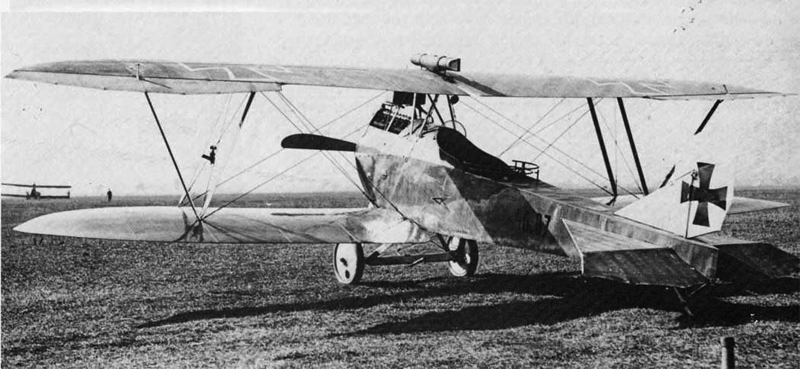
The Lloyd C.V was already an obsolescent reconnaissance plane in 1917.
Fifty of these were built by Lloyd plant of Aszód, and another fifty by WKF in Vienna. The C.III only differed by its 160 hp (120 kW) Austro-Daimler engine, and was produced by Lloyd and Wiener Karosserie und Flugzeugfabrik (WKF), with circa 50-60 planes. The C.IV was virtually identical to the C.III, however the C.V was a completely new animal, compact, heavier, and with an unusual wing configuration.
About 144 were delivered, 96 powered by an Austro-Daimler engine, and 48 by WKF with a Benz engine. They experienced a short service on the front line before being relegated to training or rear-lines patrols or reserve. They also served after the war with Poland, Hungary and Ukraine. The Polish ones called “Veneer” still flew by 1924.
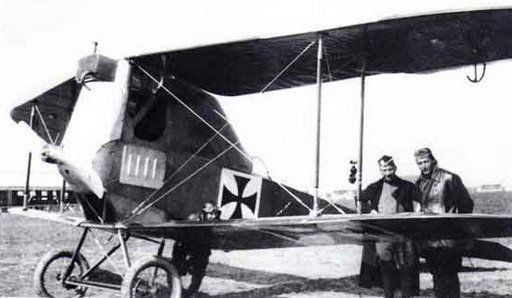
The Lloyd FJ was an odd solution to fire above the propeller.
The C-Series was quite conventional but the company also designed some of the strangest-looking planes of the Great War. One was a fighter, called the FJ and 40.05, never past the prototype stage. It was very unorthodox as a fighter/recce biplane in 1915 but never went beyond testing and development.
The solution retained by the company was to provide an excellent field of view of the gunner, by raising him above the upper plane. It was a trade off, waiting for the machine gun synchronization to be invented. The FJ was not unique in its approach by placing the machine-gun above the main wing, but it was unique in that the pilot was raised to the same level, instead of just having to stand and fire, while having the steering locked between the legs. This system in theory allowed the pilot to correctly aim the plane and fire over the propeller.
The over-sized nose section filled the entire space between both wings, giving the machine gunner an excellent field of fire. The pilot however sat behind and his own forward field of vision was cluttered. The model FJ first flew in January 1916 and tested but needless to say, the Army rejected it outright. The Lloyd 40.05 was later converted as a single seat fighter, with a 0.315 in (8 mm) Schwarzlose machine gun in gun pod, but again the Kaiserliche und Königliche Luftfahrtruppen also rejected it. With its very large frontal engine hood, it had a lot of drag and was too slow for a fighter, and unstable, while at the same time dangerous to fly, and especially to land.
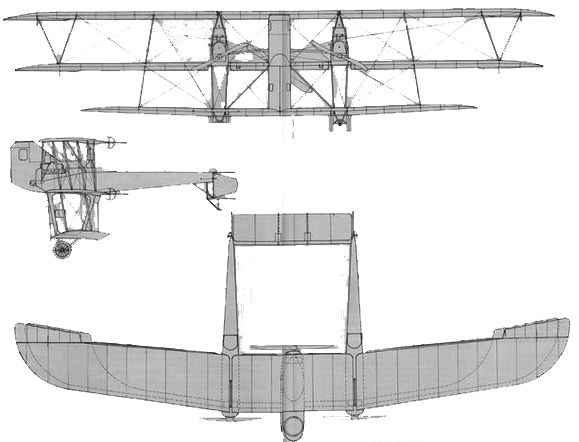
The strange Luftkreuzer I was an answer to the Italian Caproni, with imaginative features which proved too much for its center of gravity…
This did not prevented the company to try this idea on yet another plane, this time after receiving in January 1916 a blueprint for a “flying cruiser” or Luftkreuzer I (type I, LK), later identified as Lloyd 40.08 and later the Luftkreuzer II (type II, LV) or 40.10. This was a response to the Italian Caproni bomber, driven by a powerful central pusher engine and two smaller tractor engines.
It was a triplane with unequal span wings, with a total area of 110 square meters. In addition to a fuselage placed between the mid-wings and upper wing, which add a vertical front machine gun post in the same fashion than the FJ fighter, a stream gondola for the bomber was placed between the mid-wings and lower wings. The upper front part was roomy enough for two gunners with an excellent observation field, and provided with an illuminator.
Completed in June 1916 the first skycruiser made engine testing at Aszód airfield which detected it was too heavy on the nose, with a too high gravity center and its landing gear proved too weak. A third wheel was added to the undercarriage, and the maiden flight took place in October 1916. Oberleutnant Antal Lany-Lanczendorfer was the test pilot but its not even known of it really took off.
The Fliegerarsenal later ordered the reduction of the bomb load, to save on the take-off weight and in December additional chassis rails were installed in the main undercarriage. In March 1917 Lloyd revision the airplane shown to the Army, but it was rejected and the 40.08 airframe was stored, and later in January 1918 moved to Cheb while the Sky cruiser program was terminated.
Lloyd would also test two experimental fighters, one was the FJ 40.15 (which could have been -if adopted- the Lloyd Dr.I) a triplane, with a very specific configuration. Indeed the mid and upper planes were almost connected to the fuselage, which was tall enough to allow the pilot to see above the upper wing, while the lower wing was placed right behind the undercarriage. On the latter Lloyd FJ 40.16, a biplane, the two wings were connected to the fuselage.
This also gave the pilot a much better forward field of view. But in that second prototype, the lower wing was placed way more at the rear and each one had its one pair of struts connected to the fuselage. Perhaps too unorthodox for the KuK Luft. both were also rejected.
Loyd models
- Lloyd C.I 1913 recce biplane (13)
- Lloyd C.II 1914 recce biplane (100)
- Lloyd C.III 1915 recce biplane (50)
- Lloyd FJ 1915 fighter biplane (1)
- Lloyd C.IV 1916 recce biplane (50)
- Lloyd LK I/II 1916 bomber triplane (2)
- Lloyd C.V 1917 recce biplane (144)
- Lloyd FJ 40.15 1917 fighter triplane (1)
- Lloyd FJ 40.16 1917 fighter biplane (1)
✠ Lohner Werke
From coachbuilding to war planes and back
Founded in 1821 by German Heinrich Lohner in Vienna, this coachbuilder or wagonmaster became quite renowned in Europe and beyond, producing 500 to 900 vehicles yearly, some for the Crown heads of Norway, Sweden, and Romania in addition to the Austro-Hungarian Empire, so much as to be granted the official title of k.u.k. Hofwagenlieferant (“Royal carriagemakers”). From the 1880s through Ferdinand Porsche, electric carriages were built, and from 1905, the firm joined Daimler to form the the Österreichische Daimler Motoren Commanditgesellschaft Bierenz Fischer & Co.
In 1909, the firm started manufacturing reconnaissance aircraft for the Austro-Hungarian army. They also started a series of flying-boats for the Navy, which eventually were copied on Italian Macchi planes. Lohner also produced aircraft for the Spanish Air Force, but abandoned aircraft production for good after World War I and returned to trams and coachbodies manufacturing.
Aircraft Industrial records
- Lohner Type AA (1916)
- Lohner B.I
- Lohner B.II
- Lohner B.VII
- Lohner E Floatplane (1913)
- Lohner L Floatplane (1915)
Lohner Type AA (1916)
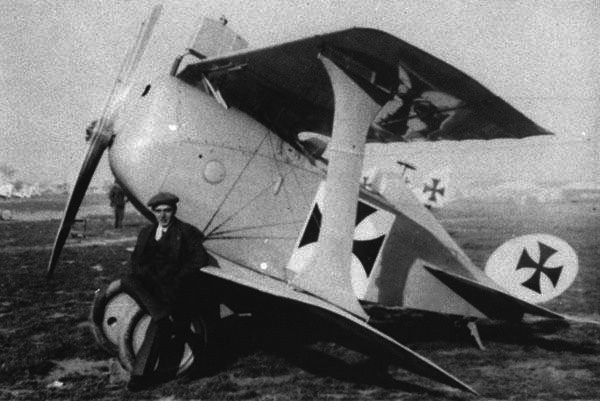
Lohner AA 111.01
In 1916 Lohner-Werke was awarded a contract from the Luftfahrttruppen to produce a single seat fighter. It was to be designed around the 185 hp Austro-Daimler six-cylinder inline engine. The first airframe was denominated serial number 111.01, and on in September the 10.20 was showncased at Aspern. This was a single-bay model with equal-span wings, I-type struts, the empennage was a conventional horizontal stabilizer and an abbreviated all-moving rudder. The plane was rather short and stubby, but made of laminated wood. This structure was strong enough to carry two synchronized Schwarzlose machine guns.
Early ground trials shown bad yaw control and a larger rudder was installed while the fuselage was lengthened of 20 cm. The Lohner 10.20 flew on 29 December 1916 but later crashed in February 1917 because of stability problems.
Repairs and extensive modifications were made at the factory, giving the 10.20A, with the fuselage 6.35m (20ft 10in) long and “I” type struts replaced by twin struts with wire braces. Also the tail was redesigned with a fixed vertical fin and larger rudder. On 6 June 1917 however the plane was completely destroyed in another crash. The second prototype 111.02 was also called 10.20B, having the 10.20A tail surfaces but a deep dorsal fin and its I struts reinforced by inclined V-struts. Its flew at Aspern on 2 June 1917 and the Luftfahrttruppen ordered official trials until October. The third prototype (111.03) had twin struts with wire braces and the dorsal fin was enlarged to cope with the stability problems. It flew on 28 June 1917, and was tested until October but lacked performance compared to contemporary german models, so the program was terminated by the Luftfahrttruppen, Lohner-Werke being given a licence for the Aviatik (Berg) D.I. instead.
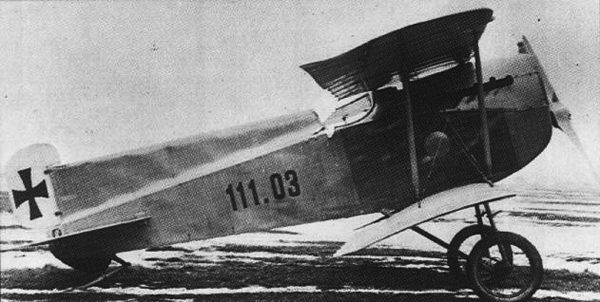
Lohner AA 111.03
Specifications
> Length: 6.35 m (20 ft 10 in), Wingspan: 7.60 m (24 ft 11 in), Height: 3.00 m (9 ft 10 in), Wing area: 20.00 m² (215.28ft²)
> Empty weight: 623 kg (1,373 lb), Max. takeoff weight: 946 kg (2,085 lb)
> Engine: Austro-Daimler 6 water-cooled inline 6-cylinder 137.95 kW (185 hp)
> Performances: Top speed: 193 km/h (120 mph), Range: 386 km (240 mi), Time to 1000 m (3,280 ft): 2.66 min.
> Armament: Two synchronized Schwarzlose 0.3 in machine guns
✠ Phönix
History of Phönix Flugzeugwerke
Contrary to much aircraft manufacturers, Phönix (“Phoenix”) was formed in March 1917 as an Austro-Hungarian plant based in Vienna first building licensed production of the Albatros and Brandenburg models.
During its short span, in close collaboration with lloyd, the company would built only two planes, a fighter and a multipurpose biplane. But the fighter was of such quality that it rose at the very top of Austro-Hungarian charts. It was the second design based on the Hansa-Brandenburg D.I which was until then built under licence.
It was a single-seat biplane fighter with many improvements over the original design. This model was declined into the D.II and D.III sub-variants and used long after the war under the name J.1 with the Swedish air force. This was probably the best Austro-Hungarian fighter of the war, flew by its most prominent aces like Kurt Gruber, Roman Schmidt, Karl Teichmann, Godwin Brumowski, Benno Fiala Ritter von Fernbrugg, Franz Gräser, Karl Nikitsch, Frank Linke-Crawford and József Kiss.
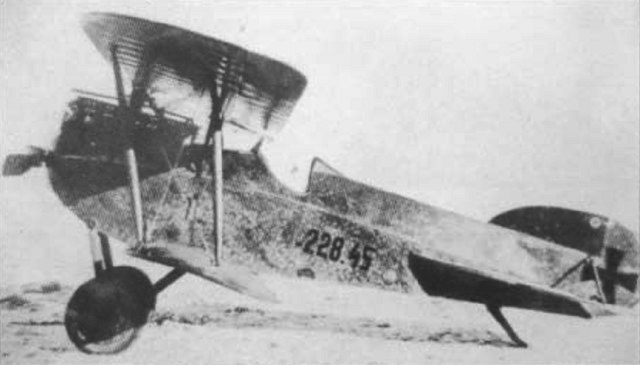
The compact, stubby Phönix D.I was a pure dogfighter, fast, very agile and resilient.
On the other hand the C.I was derived from the license-built Hansa Brandenburg C.II as a two-seat reconnaissance and multipurpose biplane. Its gunner had an excellent, unobstructed field of fire and it was fast, propelled by a 230 HP Hiero engine, able to bring it to 175 kph with a climbing time to 1000m under 4 min 30 sec.
96 were manufactured, first tested in Vienna at Aspern and placed into service from the spring of 1918, remaining in service until the end of the First World War. After the war, Sweden built 30 more of these under license, still in service until the late 1920s.
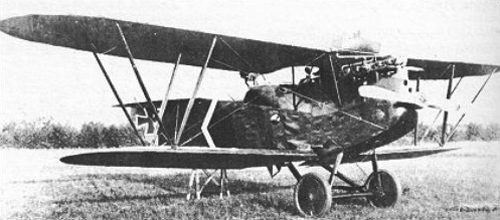
The C.I was a sturdy and fast multipurpose biplane
Phönix Models
- Phönix D.1 1917 (96)
- Phönix C.1 1918 (155)
✠ Ungarische Flugzeugfabrik AG (UFAG)
History of UFAG
This first Hungarian aircraft manufacturer was funded by Freiherr Karl von Škoda in Budapest during the war. It first manufactured Lohner aircrafts under licence, and developed its own reconnaissance model, the C.I. Originally there was already a company founded in 1912 by the financial magnate Camillo Costiglione from Trieste, which owned several manufacturers prior and during the war: in Vienna, Albatros Werke and Phönix Flugzeugwerke, in Berlin, Hansa und Brandenburgische Flugzeugwerke GmbH. UFAG manufactured licensed products such as the Lohner B.II (39 in 1915), Brandenburg C.I. (330). Compared to the that about 186 Ufag C.I were built.
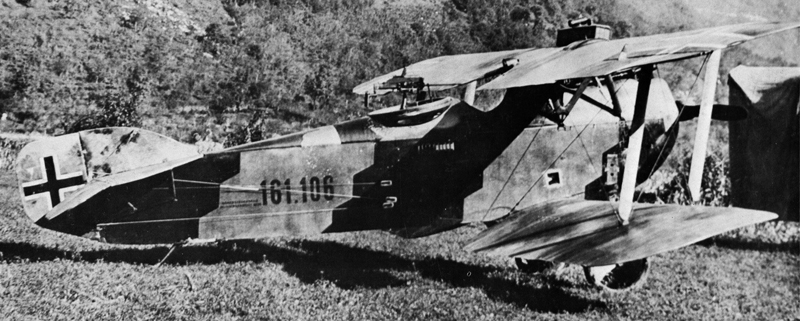
Ufag C.I, Summer 1918, Italian Front. From the Autumn (v.15 n. 3) 1974 issue of Cross & Cockade Journal. Charles Gray photograph. (Pinterest)
Thin Bloudek Era
Between 1916 and 1918, Slovenian engineer Stanko Bloudek headed the factory design team. He was the only one in charge on the construction of the Ufag C.I., a two-seat reconnaissance bomber adopted at the end of 1917. The aircraft was also used on the Greek and Balkanic front. Along with the Balaban workshop technical manager of the factory, they worked on an helicopter-like airship project. Specialized literature mentions the project as the “Balaban-Bloudek helicopter”. The aircraft had an hexagonal propeller on its vertical axis, but having many problems with directional stability, the program was eventually canceled.
The next factory project was a single-seater fighter, which was supposed to be competitive in terms of maneuverability. But the would-be fighter lacked a powerful engine to compete. Therefeore, the Ufag D.I. was supposed to be a monoplane with a wing span of 8.5 m and 380 kg empty weight. Due to the breakup of Austro-Hungaria in 1918 however, all work ceased even before the completion of the first prototype. The factory produced over a thousand aircraft during its three years of activity. At a ceremony in the company on the exact 1000th aircraft manufactured, Stanko Bloudek was photographed in front of a decorated plane with the registration number 161.121 for a memorial image of this event.
UFAG C.I
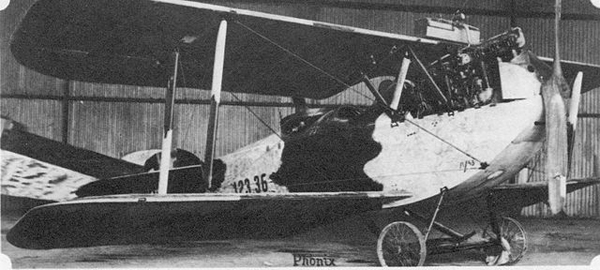
The Ufag (Or Oefag) C.I was a good all-around multipurpose biplane manufactured by UFAG and Phönix to a total of 166 planes
Ufag, since 1915 was only producing licenced combat aircraft, of the imperial German Jacob Lohner Werke und Sohn and Hansa & Brandenburgischen Flugzeugwerke GmbH; Eventually capitalizing with facilities, tooling, and this experience, the company decided to create its own design, given to Stanko Bloudek engineers team. In 1917 the C.I was developed (C.I was the Idflieg designation assigned to multi-purpose reconnaissance aircraft). After the initial three prototypes flew before the end of 1917, production was authorized as the plane was deemed suitable for the required role. Since the facory was already nearly at full capacity, the order was passed onto Phönix Flugzeugwerke, under licence.
The C.1 was a traditional two-seat biplane made with a plywood structure and steel tubes covered with canvas. This fuselage had a square section, and was characterized by two open cabins in tandem. The observer one had a 190° ring machine-gun. The tail ended in a traditional single fletching model, with rudder and horizontal planes covered in canvas, the latter braced and triangular. The wing configuration was a of an equal span planes (upper and lower wings), but the upper one was slightly higher and connected to the fuselage by struts and fitted with ailerons; The lower one was further back to the rear; Both surfaces were connected by a pair of parallel tubular struts, integrated by tie rods in steel cables.
The landing gear was of a simple traditional type with a tubular frame under the fuselage and large wheels connected by a rigid axle, and a support shoe at the back. For propulsion, the C.I was fitted with a locally-produced Hiero 6 engine, a 6-cylinder, water-cooled, rated for 230 PS (169 kW). It was combined with a fixed pitch, two-blade wooden propeller. The armament consisted of two or three Schwarzlose MG M.07/12×8 mm caliber machine guns, one on the forward hood and the second at the rear, operated by the observer.
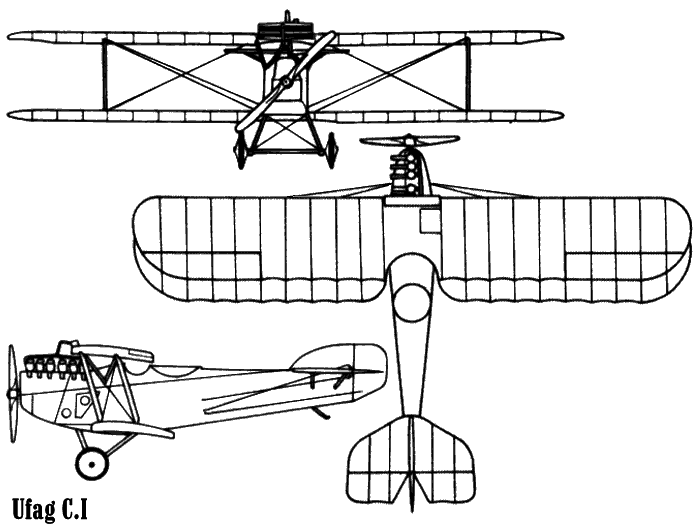
Ufag C.I Blueprint (Unknown origin)
Operational use
The Ufag C.I was introduced in the first months of 1918 and after a positive evaluation, gradually assigned at least two Fliegerkompanie of the k.u.k. Luftfahrtruppen, Flik 47/F and 58/D, in which it was used for reconnaissance, including high altitude photography until the end of the war.
Specifications
Dimensions: 7,50 m x 10,50 m x 2,90 m. 22,0 m² wing area.
Weight: 750 kg empty, 1 050 kg maximal take off
Propulsion: Hiero 6 cyl. 230 PS (169 kW), 190 km/h, 3 h autonomy, ceiling 4 900 m
Armament: 2-3 Schwarzlose MG M.07/12 cal. 8 mm machine guns.
Austro-Hungarian Floatplanes (Flugboot)
✠ Lohner Flugboot Type E (1913)
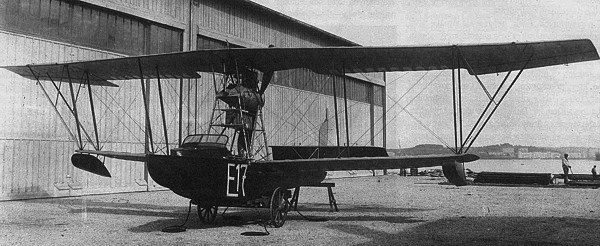
Lohner E flying boat
The Lohner E (the letter stood for Igo Etrich, one of the Lohner engineers) was a reconnaissance floatplane with a conventional design, biplane wings, a slight sweepback, and an engine mounted in a pusher-fashion in the interplane gap while the crew, pilot and observer, were seated in tandem in an open cockpit. 40 were produced the introduction in 1915 of the more powerful Lohner L. There were no known variants or users outside Austria-Hungary.

Specifications
> Length: 10.25 m (33 ft 8 in), wingspan: 16.20 m (53 ft 2 in), height: 3.85 m (12 ft 8 in)
> Gross weight: 1,700 kg (3,747 lb)
> Engine: Hiero 85hp, 67 kW (85 hp)
> Performance Top speed 105 km/h (65 mph), Endurance: 4 hours, Service ceiling: 4,000 m (13,120 ft)
> Armament: None (not powerful enough to carry bombs, but rifles and pisols).
✠ Lohner Flugboot Type L (1915)
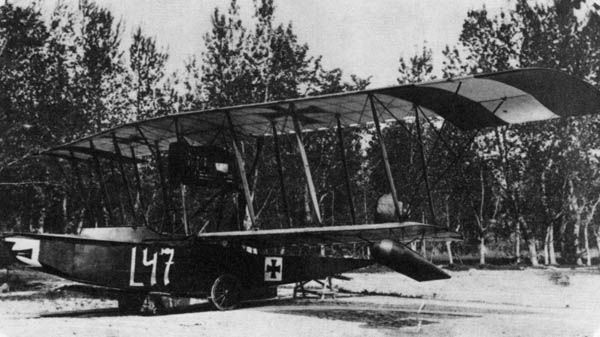
This model derived from the Lohner E, a bit more powerful. It was also manufactured by UFAG, Hansa-Brandenburg and Macchi. It was a two-bay sesquiplane with a pusher engine mounted on struts in the interplane gap. Pilot and observer sat in tandem in an open cockpit, and the wings featured a sweepback.
This became a highly influential design, soon licensed for production by UFAG. It provided also the basis for other major manufacturers own designs. In Germany, Hansa-Brandenburg made a modified version, which became their own flying boat called the FB. In fact Macchi copied a captured model , known as as the Macchi L.1. It became later the basis for the whole Macchi lineage, starting with the L.2. This plane was taken as the naval air station of Porto Corsini. The derivative Macchi L.1 had a Fiat machine gun and Isotta-Fraschini V.4a engine (14 built). A restored example is now preserved at the Italian Air Force Museum at Vigna di Valle.
Operational history

Löhner Flugboot Type L (1915)
These Lohner seaplanes saw extensive use even before World War I and long after, as the design was sound and reliable. In particular, on 2 August 1914, some of these seaplanes took of from Kumbor and photographed the Montenegrin artillery positions. This was the first operational use of air reconnaissance in this war. On 16 September 1915, the L 132 (Lt. Cdr Dimitrije Konjović) and L 135 (Walter Železni) over Cattaro spotted the French Brumaire-class submarine Foucault, attacked it with bombs and struck it enough as she was abandoned by her crew. One of the two planes landed at sea and captured two French officers, then back to Kumbor. This was the first “kill” of a submarine by aircrafts.

Löhner L floatplane preserved at the Italian Air Force Museum.
The model L was declined into the R – Photo-reconnaissance version, and S – Trainer version. Outside Germany and Italy, this model was also used by Yugoslavia.
Specifications
> Crew: two, pilot and observer
> Length: 10.26 m (33 ft 8 in), Wingspan: 16.2 m (53 ft 2 in), Height: 3.85 m (12 ft 8 in), Wing area: 53 m2 (570 sq ft)
> Empty weight: 1,150 kg (2,535 lb), Gross weight: 1,700 kg (3,748 lb)
> Engine: 1 × Austro-Daimler 6 6-cyl. water-cooled in-line piston engine, 120 kW (160 hp)
> Performance: Top speed: 105 km/h (65 mph; 57 kn), Range: 600 km (373 mi; 324 nmi), Service ceiling: 2,500 m (8,200 ft)
> Armament: One trainable machine gun for observer, 200 kg (440 lb) of bombs.
✠ Oeffag Flugboot Type G (1915-18)

G-9 profile, Src http://www.kuk-kriegsmarine.at/seeflieger3.htm
The Oeffag G, or Oeffag Type G (Oeffag-Mickl G) was a three-engined reconnaissance flying boat. It was built in Austria, deployed exclusively by the Kaiserlich und Königlich Seefliegerkorps (K.u.K. Seefliegerkorps) but in small numbers as only 12 were hand-built by the company and constantly improved, meaning almost all were different and the two last never complete when the war ended. Oeffag (Oesterreichische Flugzeugfabrik AG) funded in 1915 was led by Dipl-Ing.Mickl. The sole model, called also Grosskampfflugboot G, never reached “mass production” as being an artisanal product improved with each unit delivered.
In 1914-1915 Pulském arsenal or Pola arsenal received instruction to built large patrol flying boats, under the designation Grosskampfflugboot (“Large seaplane”) which was later abbreviated simply as “Flugboot G”. šéfoval Linienschiffsleutnant Maschinenbauingenieur 2. Klasse der Reserve Josef Mickla was both an Engineer and marine pilot and so took the head of the small team responsible for the project.
His original design was submitted on paper form, and approved by the admirality as a three-engine flying boat, carrying two aerial torpedoes or 800 kg of bombs and armed with a single 66 mm cannon forward. The latter was developed and produced by škoda. Thus 20 caliber gun was made 400 kg lighter to be air-carried, but it’s recoil was too strong and threatened the structural integrity of the seaplane; Thus were developed a new recoil system and lower-charge dedicated HE shells weighing 5 kg expected to do some damage on Italian torpedo boats. The armament was completed by defensive machine guns.
Completion of the prototype, called G1, was achieved in the summer of 1915, but tests were performed without carrying a torpedo, and only using its 66 mm cannon. First static tests were performed and fixes, until it first flew by the the autumn of 1915. A unit was created for it, Flik 23 (“flight 23”). But in November it crashed in Pola, having its top wing ripped off. The main pilot (former commander, Linienschiffsleutnant Hugo Ockermüller, died, while copilot Gottfried Freiherr von Banfield, mechanic Havelka were both severely injured but survived.

G-4 with Mikuleczky und Mickl in Pola 1916. Src http://www.kuk-kriegsmarine.at/seeflieger3.htm
Despite of this development of further prototypes went on. The structure was revised, and a search for more powerful engines started as rhey were unable to carry the four tonnes of the model, even partially loaded for a proper take off. When in flight it barely reached 110 km/h and reached 600 m in altitude, flying for 45 minutes. In addition the G-1 displayed poor flight characteristics and airframe strength. G.2 was, like G.3, powered by the original 150 kW (200 hp) Hiero 6 cylinder water-cooled inline piston engines with a biplane tail unit, mounted on struts above the fuselage and triple rudders. This proved too complicated and called for a severe revision. None of the G-2 and G-3 ever really entered service as they were considered unsafe to fly.
For the new serie, from G-4 in 1916, Daimler engines were obtained, more powerful but still unsufficient. Such power just did not existed in 1916 either in Germany or Austria. In addition to the 185 kW (248 hp) Austro-Daimler 6 cylinder engines they kept the original biplane tail unit. The G-4 apparently flew with some success, but was still sluggish and needed reinforcements.
The impoved G-5 flew on 6 November 1916, but this ended as a disaster as it also failed and crashed, killing the entire crew. It happened during the ceremony of the start of the Pola Arsenal Naval Air Branch. The G-5 crashed over Fažanským on the coast. Linienschiffsleutnant Gustav Klasing, commander, Fregattenleutnant Hely Nicora, Fregattenleutnant Stanislav the ka’ba were buried with military honors.
Next came the G.8 and G.9 powered by 230 kW (310 hp) Hiero 6 engines. They had a monoplane strut mounted tailplane, single fin and rudder, and tailplane. Sturdier, more powerful, they were promising and apparently flew in 1917, although details are not known. At the time the admiralty seemed fed up with the repeated failures of Josef Mickla’s workshop to deliver a workable flying boat fit for production. G.10 and G.11 were a variant of the G.9 aparently never completed, and the last model in late 1917 was the G.12 powered by 185 kW (248 hp) Austro-Daimler 6 cylinder engines, and monoplane tail unit. It was the sturdier of the lot but it’s even unsure if it ever flew. The number of fully completed prototypes and resources diverged amonf sources, some arguing 9 prototypes were completed and tested, other going from 10 or even all 12.
Specifications (G-5)

Src kuk-kriegsmarine.at
> Crew: 3-6, pilot, main gunner, loader/mechanic and planned three machine-gunners
> Length: 17.10 m (56 ft 1 in), Wingspan: 24.36 m (79 ft 11 in), Height: 5.46 m (17 ft 11 in)
> Empty weight: 4,000 kg (8,818 lb)
> Engine: 3× Austro-Daimler 185hp 6-cyl. water-cooled in-line piston engines 138 kW (185 hp) each
> Propellers: 2-bladed wooden fixed pitch pusher propellers
> Performance: Top speed: 110 km/h (68 mph, 59 kn)
> Range (theoretical): 500 km (300 mi; 280 nmi)
> Service ceiling: Estimated 2,000 m (7,000 ft)
> Armament: 66 mm D/20 gun, 1 trainable LMG, 800 kg bombs/2 torpedoes (never achieved).
German seaplanes/floatplanes in Seeflieg. service
Src, Read More
Schupita, Peter (1983). Die k. u. k. Seeflieger : Chronik und Dokumentation der österreichisch-ungarischen Marineluftwaffe 1911-1918 (in German). Koblenz: Bernard & Graefe
https://riseofflight.com/forum/topic/32421-hansa-brandenburg-lohner-seaplanes/
http://www.kuk-kriegsmarine.at/seeflieger3.htm
https://www.armedconflicts.com/topic/view/168843/Oeffag-G
https://www.palba.cz/
https://knollerbikonstrukt.blogspot.fr/ (DE)
https://en.wikipedia.org/wiki/Imperial_and_Royal_Aviation_Troops
https://www.militaryfactory.com/aircraft/by-country.asp?Nation=Austria-Hungary
https://ww1.habsburger.net/en/chapters/procurement-campaign-1915-16-and-knoller-programme
https://www.militaryfactory.com/aircraft/detail.asp?aircraft_id=1696
https://en.wikipedia.org/wiki/Knoller_C.I
https://en.wikipedia.org/wiki/Knoller_C.II
https://www.ntm.cz/cs/heslar/knoller
https://www.militaryfactory.com/aircraft/by-country.asp?Nation=Austria-Hungary
https://ww1.habsburger.net/en/chapters/beginnings-aircraft-manufacture-austria
https://flyingmachines.ru/Site2/Crafts/Craft29144.htm
https://drawingdatabase.com/knoller-c-ii/
https://www.mincbergr.net/index.php?page=knoller-cii-lo
Did you known Karl Urban is an Hollywood actor but was also an Austro-Hungarian ww1 ace ?
https://books.google.fr/books?id=vpweDAAAQBAJ&pg=PA87&lpg=PA87&dq=knoller+B.I&source=bl&ots=q7b0kVnjLE&sig=S0FDffqnJyd1N_UOZ99_1Q-DfuA&hl=en&sa=X&ved=0ahUKEwjtq9epnJLaAhVLGhQKHfaRCiQQ6AEIXDAK#v=onepage&q=knoller%20B.I&f=false
https://en.wikipedia.org/wiki/Lloyd_C.I
https://en.wikipedia.org/wiki/Lloyd_C.II
https://en.wikipedia.org/wiki/Lloyd_C.V
https://www.sas1946.com/main/index.php?topic=48687.0
http://www.dieselpunks.org/profiles/blogs/knights-of-the-air-made-in
https://en.wikipedia.org/wiki/List_of_World_War_I_Central_Powers_aircraft
http://jn.passieux.free.fr/html/Lloyd_CII.php
https://www.militaryfactory.com/aircraft/detail.asp?aircraft_id=739
https://en.wikipedia.org/wiki/Lohner-Werke
https://en.wikipedia.org/wiki/Lohner_B.I
https://en.wikipedia.org/wiki/Lohner_B.II
https://en.wikipedia.org/wiki/Lohner_B.VII
https://en.wikipedia.org/wiki/Ph%C3%B6nix_D.I
https://de.wikipedia.org/wiki/Ph%C3%B6nix_Flugzeugwerke
https://en.wikipedia.org/wiki/Ph%C3%B6nix_C.I
https://it.wikipedia.org/wiki/Ungarische_Flugzeugfabrik (IT)
https://sl.wikipedia.org/wiki/Ufag (Hu)
https://it.wikipedia.org/wiki/Ufag_C.I (It)
https://www.militaryfactory.com/aircraft/detail.asp?aircraft_id=744
https://commons.wikimedia.org/wiki/Category:Aviatik_aircraft
https://en.wikipedia.org/wiki/Aviatik
Broken Wings: The Hungarian Air Force, 1918-45
Google Book: Italian and Austro-Hungarian Military Aviation On the Italian Front In World war one


 Latest Facebook Entry -
Latest Facebook Entry -  X(Tweeter) Naval Encyclopedia's deck archive
X(Tweeter) Naval Encyclopedia's deck archive Instagram (@navalencyc)
Instagram (@navalencyc)





 French Navy
French Navy Royal Navy
Royal Navy Russian Navy
Russian Navy Armada Espanola
Armada Espanola Austrian Navy
Austrian Navy K.u.K. Kriegsmarine
K.u.K. Kriegsmarine Dansk Marine
Dansk Marine Nautiko Hellenon
Nautiko Hellenon Koninklije Marine 1870
Koninklije Marine 1870 Marinha do Brasil
Marinha do Brasil Osmanlı Donanması
Osmanlı Donanması Marina Do Peru
Marina Do Peru Marinha do Portugal
Marinha do Portugal Regia Marina 1870
Regia Marina 1870 Nihhon Kaigun 1870
Nihhon Kaigun 1870 Preußische Marine 1870
Preußische Marine 1870 Russkiy Flot 1870
Russkiy Flot 1870 Svenska marinen
Svenska marinen Søværnet
Søværnet Union Navy
Union Navy Confederate Navy
Confederate Navy Armada de Argentina
Armada de Argentina Imperial Chinese Navy
Imperial Chinese Navy Marinha do Portugal
Marinha do Portugal Mexico
Mexico Kaiserliche Marine
Kaiserliche Marine 1898 US Navy
1898 US Navy Sovietskiy Flot
Sovietskiy Flot Royal Canadian Navy
Royal Canadian Navy Royal Australian Navy
Royal Australian Navy RNZN Fleet
RNZN Fleet Chinese Navy 1937
Chinese Navy 1937 Kriegsmarine
Kriegsmarine Chilean Navy
Chilean Navy Danish Navy
Danish Navy Finnish Navy
Finnish Navy Hellenic Navy
Hellenic Navy Polish Navy
Polish Navy Romanian Navy
Romanian Navy Turkish Navy
Turkish Navy Royal Yugoslav Navy
Royal Yugoslav Navy Royal Thai Navy
Royal Thai Navy Minor Navies
Minor Navies Albania
Albania Austria
Austria Belgium
Belgium Columbia
Columbia Costa Rica
Costa Rica Cuba
Cuba Czechoslovakia
Czechoslovakia Dominican Republic
Dominican Republic Haiti
Haiti Hungary
Hungary Honduras
Honduras Estonia
Estonia Iceland
Iceland Eire
Eire Equador
Equador Iran
Iran Iraq
Iraq Latvia
Latvia Liberia
Liberia Lithuania
Lithuania Mandchukuo
Mandchukuo Morocco
Morocco Nicaragua
Nicaragua Persia
Persia San Salvador
San Salvador Sarawak
Sarawak Uruguay
Uruguay Venezuela
Venezuela Zanzibar
Zanzibar Warsaw Pact Navies
Warsaw Pact Navies Bulgaria
Bulgaria Hungary
Hungary

 Bundesmarine
Bundesmarine Dutch Navy
Dutch Navy Hellenic Navy
Hellenic Navy Marina Militare
Marina Militare Yugoslav Navy
Yugoslav Navy Chinese Navy
Chinese Navy Indian Navy
Indian Navy Indonesian Navy
Indonesian Navy JMSDF
JMSDF North Korean Navy
North Korean Navy Pakistani Navy
Pakistani Navy Philippines Navy
Philippines Navy ROKN
ROKN Rep. of Singapore Navy
Rep. of Singapore Navy Taiwanese Navy
Taiwanese Navy IDF Navy
IDF Navy Saudi Navy
Saudi Navy Royal New Zealand Navy
Royal New Zealand Navy Egyptian Navy
Egyptian Navy South African Navy
South African Navy






























 Ukrainian Navy
Ukrainian Navy dbodesign
dbodesign